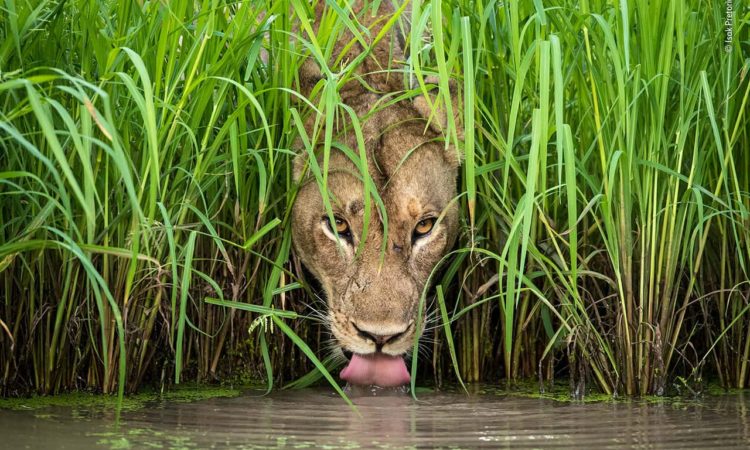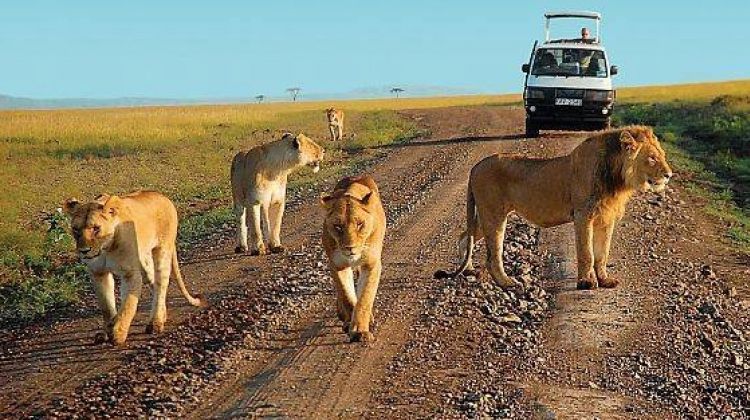Wildlife in Queen Elizabeth National Park

Wildlife in Queen Elizabeth National Park
Wildlife in Queen Elizabeth national park is genuinely the reason as to why it is termed as the medley of nature’s wonders by a number of writers. Queen Elizabeth national park is found in the south western region of Uganda. Perhaps its location is a reason for the abundance of nature queen Elizabeth national park is blessed with amongst the national parks in east Africa and Africa at large.
Wildlife, in a synopsis, is all life that exists without human intervention; animals and plants that grow independently of people (Cambridge academic content dictionary). This can include wild animals, birds, and vegetation that exist in places where human intervention is limited like; protected areas such as Queen Elizabeth national park and others.
The wildlife in Queen Elizabeth national park beats the rest of the national parks in Uganda when it comes to biodiversity. It has a number of natural habitats, call them ecosystems, ranging from savannah to low land forests and swamps. The natural habitats are harbors for a variety of animals and, perhaps, are the reasons for the biodiversity exhibited in Queen Elizabeth national park.
The game
Queen Elizabeth national park is gallant when it comes to game viewing because it is internationally known for its abundant and unique selection of big wild animals. Queen Elizabeth national park has over 5000 hippos that can be found along the shorelines of water bodies, for example, kazinga channel and its wondrous boat / launch cruise can expose you to a large community of hippos in groups called schools.
Queen Elizabeth national park has quite a number of elephants; over 2500 African elephants. They are indeed unique African elephants because they have their ears shaped as the map of Africa, and this fact is an attribute to the name “African elephants”. The elephants are common in the national park and along kazinga channel to. You can enjoy the jungle calls from an elephant herd, luckily, when it crosses your way during the game drive in Queen Elizabeth national park.
![]()
Possibly, Queen Elizabeth national park has the highest number buffaloes in east Africa and so many other national parks on the African continent; it has over 10000 buffaloes spread throughout the national park. Buffaloes walk in groups called herds and this is one way of providing protection from the notorious hunters in the national park; carnivores. Other animals include the warthogs which can be seen at mweya peninsular and near mweya safari lodge, waterbucks, Uganda kobs mainly found in kasenyi plains, however, also common in the all park, topis, and the strange sitatunga antelopes among the rest.
The primates
Queen Elizabeth national park is blessed with quite a number of primate species that happily play in the diverse habitats of the national park; the chimpanzee is the most popular, however endangered, primate species found in a hidden haven of a rainforest border by steep sides, called kyambura gorge. The other primates that you can find in forested areas (like kyambura game reserve and maramagambo forest) of Queen Elizabeth national park are; vervet monkeys, black and white colobus monkeys( so common in the national park), and the boldest baboons that you will have to close your car window as you view them (for safety reasons).

Avian life / Bird Species
Queen Elizabeth national park is the protected area in Africa with the most bird species some of which are migratory and not common birds. Birding in Queen Elizabeth national park is incredibly done along kazinga channel also an important birding area (IBA) according to birding international. Queen Elizabeth national park has quite a variety of birds; over 600 birds and most of them are famous birds of east Africa. You can enjoy bird viewing during the kazinga launch cruise, maramagambo forest nature walk, and community walks.
Carnivores
The big cats/ carnivores of Queen Elizabeth national park are the most fallacious feline animals like; lions, leopards, civet, genal and serval cats. The lions of Queen Elizabeth national park are common; however, the tree climbing lions are unique and make the highlight of any African adventure. The tree climbing lions, unlike the other lions, are found in ishasha (southern part of the national park). On the other hand, the leopards are solitary and good at camouflaging at night (they are nocturnal). They can be seen during the night game drive (best done from Queen Elizabeth national park in Uganda). Also the small cats are mainly nocturnal and can be seen during the night game drive in Queen Elizabeth national park.

Vegetation cover
Vegetation is yet another aspect of wildlife in Queen Elizabeth national park. The vegetation in Queen Elizabeth is a reason to the beauty that the national park flaunts all through the year. Perhaps, the presence of different types of vegetation in Queen Elizabeth national park is the reason for its abundant animal species.

Queen Elizabeth national park is dominated with savannah vegetation; in some parts savannah grassland like in kasenyi plains and in other parts savannah woodland like in ishasha sector in the southern area of Queen Elizabeth national park. Savannah vegetation is characterized with tall grass that looks golden in the morning game drive when the sun rises and in the evening during the sunset. The tall grass in kasenyi is a good hunting ground for the lions; they camouflage with the color if the dry grass during the dry season. And, during the wet or rainy season, the grass land flaunts its verdant over the undulating hills of Queen Elizabeth national park; wonderful scenery for your sight. The savannah vegetation of the southern part of Queen Elizabeth national park is dominated with woodland tree species like acacias, cactus trees, big fig trees et cetera. It is in these trees that the famous tree climbing lions hung and relax, after the days hunt, to take a nap.
Despite the dominance of the savannah, a stretch of the rain forest in kyambura gorge and maramagambo forest mixes up the safari experience to something thrilling. Kyambura gorge is a hidden strip of a rain forest within savannah vegetation. Kymbura gorge is famous for habituated chimpanzee trekking, birding and nature walks in Queen Elizabeth national park. On the other hand, maramagambo forest is good for nature walks and birding. It is in maragambo forest that the phenomenal bat caves and nyanzibiri historical caves are found.
The swamp vegetation summarizes all the wildlife in queen Elizabeth national park; during the day the papyrus swamps along lake george hobor a number of wild animals like elephants, hippos, snapping crocodiles, snakes antelopes among other game. The swamp if kazinga channel is a habitat for a number of wildlife in terms of bird species. To note, the swamps in Queen Elizabeth national park are recognized RAMSAR sites.


